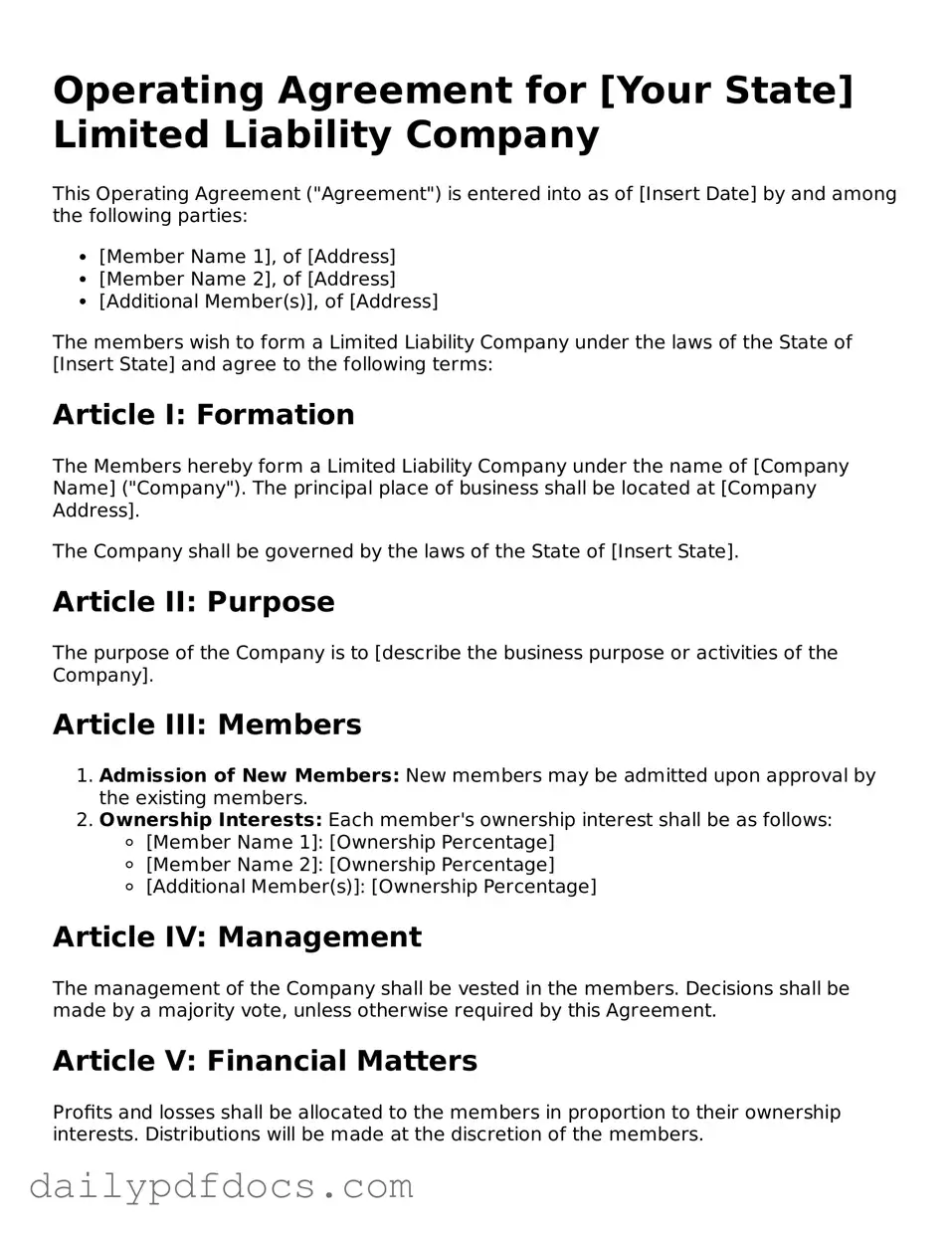Operating Agreement for [Your State] Limited Liability Company
This Operating Agreement ("Agreement") is entered into as of [Insert Date] by and among the following parties:
- [Member Name 1], of [Address]
- [Member Name 2], of [Address]
- [Additional Member(s)], of [Address]
The members wish to form a Limited Liability Company under the laws of the State of [Insert State] and agree to the following terms:
Article I: Formation
The Members hereby form a Limited Liability Company under the name of [Company Name] ("Company"). The principal place of business shall be located at [Company Address].
The Company shall be governed by the laws of the State of [Insert State].
Article II: Purpose
The purpose of the Company is to [describe the business purpose or activities of the Company].
Article III: Members
- Admission of New Members: New members may be admitted upon approval by the existing members.
- Ownership Interests: Each member's ownership interest shall be as follows:
- [Member Name 1]: [Ownership Percentage]
- [Member Name 2]: [Ownership Percentage]
- [Additional Member(s)]: [Ownership Percentage]
Article IV: Management
The management of the Company shall be vested in the members. Decisions shall be made by a majority vote, unless otherwise required by this Agreement.
Article V: Financial Matters
Profits and losses shall be allocated to the members in proportion to their ownership interests. Distributions will be made at the discretion of the members.
Article VI: Records
The Company shall maintain complete and accurate records of its business and financial affairs. Each member shall have access to the records during normal business hours.
Article VII: Indemnification
The Company shall indemnify the members to the fullest extent permitted by law against any losses, expenses, or liabilities incurred in connection with company affairs.
Article VIII: Amendments
This Agreement may be amended only by a written agreement signed by all members.
Article IX: Miscellaneous
This Agreement constitutes the entire understanding among the members with respect to the subject matter hereof and supersedes all prior agreements. If any provision of this Agreement is found to be invalid, the remaining provisions shall remain in effect.
IN WITNESS WHEREOF, the parties have executed this Operating Agreement as of the date first above written.
- ______________________________
- [Member Name 1]
- ______________________________
- [Member Name 2]
- ______________________________
- [Additional Member(s)]
